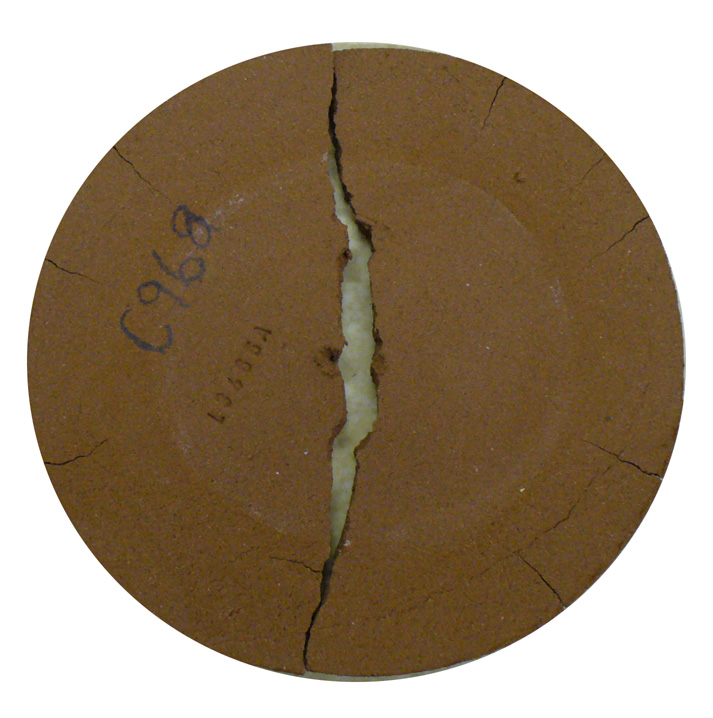| Monthly Tech-Tip | No tracking! No ads! | |
A DFAC drying test disk of a terra cotta pottery clay from St. Ignacio, Sinaloa, Mexico
This clay is used by traditional potters in the Mazatlan, Sinaloa, Mexico area. This DFAC test exhibits a very wide main crack and many edge cracks. These combine to indicate high shrinkage (a product of very high plasticity). Although the clay has some coarser grains that help channel water out, this is a very poor showing for drying performance - no large-scale manufacturer could tolerate this. But potters can and the Mexican craftsmen use it with success! How? By adapting their drying procedures. The high dry strength of this material is also a factor that helps prevent cracking. Almost any clay can be dried if the process is done evenly. And almost any can be cracked if done unevenly enough. This DFAC test is also a good indicator of the amount of soluble salts present (the slightly darker band around the perimeter), this is minimal so not scumming should appear on fired products.
Videos
Links
| Glossary |
Sulfates
Soluble sulfates in clay produce efflorescence, an unsightly scum that mars the fired surface of structural and functional ceramic products. |
| Tests |
Drying Factor
The DFAC Drying Factor test visually displays a plastic clay's response to very uneven drying. It is beneficial to show the relative drying performance of different clays. |
Got a Question?
Buy me a coffee and we can talk

https://digitalfire.com, All Rights Reserved
Privacy Policy

